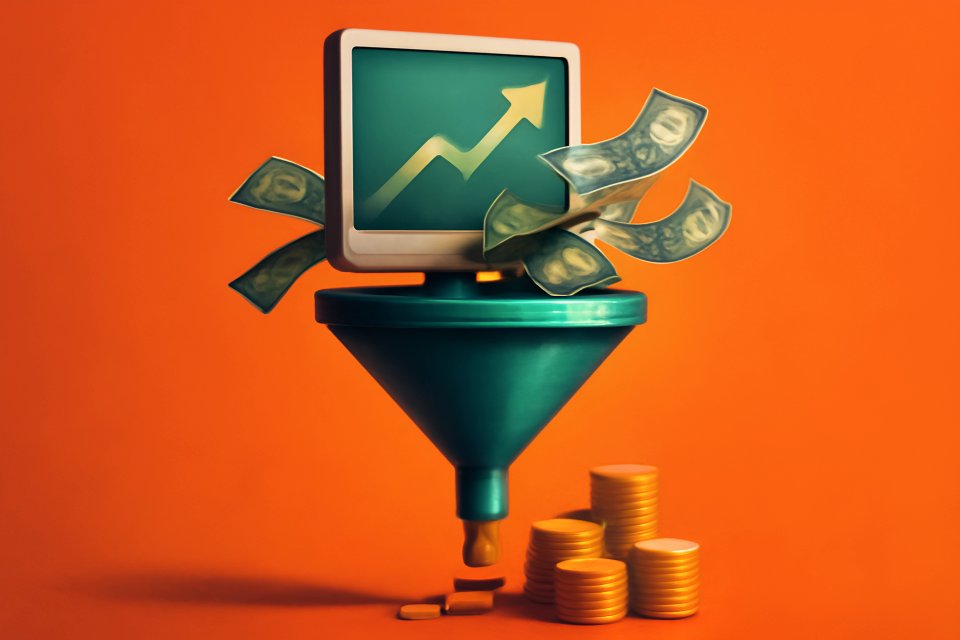
Are you tired of promoting affiliate products and hearing crickets? You pour your energy into a side hustle, hoping for that satisfying cha-ching, only to find yourself shouting into a void. You're competing in a crowded space, but what if you could sidestep the competition and speak directly to your ideal customer?
Imagine this. The most powerful marketing isn't about shouting the loudest; it's about whispering in the right ear. This is where the potent combination of affiliate marketing using micro-influencers for niche markets comes in, a strategy designed not for massive corporations, but for savvy earners like you. It’s about precision, trust, and building a revenue stream that feels authentic and sustainable.
Forget wasting your budget on ads that miss the mark. This post will provide the exact step-by-step blueprint to find, partner with, and launch a successful affiliate campaign with micro-influencers who already have the trust and attention of your perfect audience. Get ready to work smarter, not harder.
Why Micro-Influencers are Your Niche Market Superpower
So, what exactly is this secret weapon? A micro-influencer is a creator with a dedicated following, typically between 1,000 and 100,000 people, who is seen as a trusted authority in a very specific area. Think less celebrity endorsement, more trusted friend giving you a life-changing recommendation over coffee.
The magic lies in their authenticity. Because their communities are smaller and more focused, their recommendations carry immense weight. According to Tapfiliate, some micro-influencers boast engagement rates as high as 85%, a number that mega-influencers can only dream of. This isn't just passive scrolling; it's active conversation, genuine questions, and real interest.
This is your unfair advantage. By partnering with them, you tap into a hyper-targeted audience already hungry for solutions in your niche—whether it's vegan backpacking gear, Notion templates for authors, or sustainable pet care. As Vista Social points out, these creators build tight-knit communities around specific interests, leading to stronger connections and higher trust. It’s the most cost-effective way to get your offer in front of people who are not just willing, but eager, to buy.
The Pre-Launch Checklist: Setting Your Campaign Up for Success
Hold on. Before you rush off to find your first partner, you need to build a rock-solid foundation. A successful campaign is won or lost before the first outreach email is ever sent.
First, you must know your offer inside and out. Is the product or service a perfect, undeniable fit for the niche you're targeting? You need to be confident that you're providing real value, which is why it's crucial to find niche side hustles that align with your goals. Define your commission structure clearly—is it generous enough to motivate a creator to put their reputation on the line for you?
Next, define your victory. What does success actually look like for this campaign? Is it a specific number of sales, a list of new email sign-ups, or a surge in free trial registrations? Without a clear goal, you're just sailing without a compass. Finally, get your tech in order. You absolutely must have a reliable way to track performance. This means setting up unique, trackable affiliate links or discount codes for each influencer. You can't optimize what you don't measure, and having the essential digital tools for solopreneurs is non-negotiable for managing your partnerships and tracking your ROI.
The 7-Step Blueprint: Your Micro-Influencer Affiliate Strategy
Ready for the roadmap? This isn't theory; it's a repeatable process designed to get you results. Follow these seven steps to launch a powerful and profitable micro-influencer affiliate campaign.
Step 1: Identify the Right Influencers
Your first mission is to become a detective in your niche. Go beyond a simple Instagram search and dig deeper. A great place to start is with a hashtag deep dive. Instead of searching for #eco, try more specific long-tail hashtags like #zerowastekitchen or #sustainablelivingtips.
Look at who your ideal customers are already following for advice and inspiration. Analyze the audience overlaps to find creators who share your target demographic. Don't limit yourself to one platform; niche blogs and YouTube channels are often untapped goldmines of trusted voices. Finally, do some light competitor analysis to see who is promoting similar (but not directly competing) products, giving you a pre-vetted list of potential partners.
Understanding how these creators operate is key, as they have mastered the art of digital content creation to build a personal brand. This knowledge will help you spot the true authorities in your space.
Step 2: Vet Your Shortlist (The Quality Check)
A high follower count can be a vanity metric. What you truly need is engagement—a sign of a healthy, active community. Don't just glance at the numbers; do the math.
Use this simple formula to calculate the engagement rate for a few of their recent posts: (Likes + Comments) / Followers * 100. A healthy rate in a niche community is a powerful indicator of influence. Look beyond the numbers and analyze the quality of the audience. Are the comments genuine questions and discussions, or are they filled with bots and spam?
Finally, review their content with a critical eye. Does their style, tone, and value system align with your brand and product? According to Mailchimp, the most successful partnerships happen when a brand's values align with the influencer's authentic voice, creating a seamless and trustworthy recommendation for their audience.
Step 3: Craft Your Outreach Pitch (Don't Be Spammy)
This is where most people fail. They send a generic, copy-pasted email that screams "I don't care about you, I just want your audience." You need to do the opposite.
Your pitch should be personal, respectful, and benefit-driven. Start by mentioning something specific you love about their content—a recent post, a video, or an article that resonated with you. This proves you've actually done your homework. Then, briefly introduce your product and the affiliate opportunity, focusing on how it will benefit their audience.
Finally, make it clear what's in it for them. Outline the commission structure or other compensation and make the next steps incredibly simple. To truly craft a compelling offer, it helps to understand how to monetize a blog with affiliate strategies from their perspective, allowing you to frame the partnership as a true win-win.
Step 4: Negotiate a Win-Win Partnership
A successful partnership is built on mutual respect and value. There are several common compensation models for a micro-influencer affiliate strategy, and the right one depends on your product and the influencer's experience.
| Compensation Model | Best For | TheEarnist Tip |
|---|---|---|
| Commission-Only | High-ticket items or products with strong conversion rates. | Offer a higher-than-average commission percentage to make it compelling. |
| Product Gifting + Commission | Physical products or software subscriptions. | This is a great starting point to build trust and get the product in their hands. |
| Flat Fee + Commission | More established micro-influencers with proven track records. | This hybrid model provides them with upfront security while motivating performance. |
The key is flexibility. As Sprout Social's guide on affiliate influencer marketing suggests, starting with a generous commission or product gift can build a strong, long-term relationship. Don't try to lowball them; a happy, motivated partner will generate far more revenue in the long run.
Step 5: Create a Simple Influencer Brief
This isn't about controlling their creativity; it's about setting them up for success. A simple, one-page brief ensures everyone is on the same page and eliminates confusion. Your brief should be clear and concise.
Include the key talking points or benefits of your product that you want them to highlight. Provide their unique affiliate link and/or discount code in a way that's easy to copy and paste. Outline any essential Do's and Don'ts, such as brand messaging guidelines, but keep this section brief to allow for creative freedom.
Most importantly, include clear FTC disclosure guidelines. Remind them to use hashtags like #ad or #sponsored to maintain transparency with their audience. This not only protects you legally but also reinforces the trust that makes their recommendation so powerful in the first place.
Step 6: Launch & Promote
Now it's time to step back and let the creator work their magic. Their authenticity is their greatest asset, so avoid the temptation to micromanage the content. They know what resonates with their audience better than anyone.
Once their content goes live—whether it's an Instagram Story, a YouTube review, or a blog post—your job isn't over. Engage with the post immediately. Like it, leave a thoughtful comment, and be prepared to answer any questions from their audience about your product.
This shows that you're an active and supportive partner, and it helps amplify the post's reach. This is a core principle of leveraging social media for affiliate success; your engagement signals to both the influencer and their audience that this is a genuine partnership.
Step 7: Track, Analyze, and Build Relationships
The launch is just the beginning. Now, you need to become obsessed with your data. Monitor your affiliate dashboard closely to see which influencers are driving the most clicks and, more importantly, the most conversions.
Identify your top performers and double down on those relationships. Reach out to them personally, thank them for their work, and ask what you can do to support them further. A successful first campaign can be the start of a long-term, profitable partnership. This data-driven approach is essential for boosting your affiliate marketing ROI.
Use these insights to refine your strategy for future campaigns. Perhaps video content converts better than static images, or maybe a specific talking point resonates most with buyers. This continuous loop of tracking, analyzing, and optimizing is how you scale your passive income with affiliate partnerships over time.
Niche Affiliate Marketing Tips: Common Pitfalls to Avoid
As you embark on this journey, be aware of the common traps that can derail your progress. Steering clear of these mistakes will put you lightyears ahead of the competition.
The first mistake is focusing only on follower count. As we've covered, engagement is the metric that truly matters. A creator with 5,000 highly engaged followers is infinitely more valuable than one with 50,000 passive ones.
The second pitfall is sending a generic, copy-paste outreach email. Personalization is non-negotiable; it's the key that unlocks the door to genuine partnerships. The third mistake is having no clear tracking system. If you can't attribute sales to specific influencers, you're flying blind and wasting money.
Finally, never ignore FTC guidelines. The Sociable Society emphasizes that consumer trust is paramount, and transparency is the foundation of that trust. A lack of disclosure can damage the influencer's credibility and your brand's reputation, making it a lose-lose situation.
Conclusion: Start Small, Scale Smart
Let's be clear. Affiliate marketing in niche markets isn't about having a massive budget or a huge team. It's about building genuine connections with trusted voices who can speak directly to the heart of your ideal customer. It's a game of precision, not volume.
This strategy allows you to work smarter, reaching highly motivated buyers without wasting a single dollar on broad, ineffective advertising. You are tapping into pre-built communities of trust and enthusiasm, giving your side hustle the targeted fuel it needs to grow. This is the core philosophy of building a profitable online venture with minimal investment.
So, what's your next move? The blueprint is in your hands. Ready to find your first micro-influencer partner? Start with the hashtag deep dive in Step 1 and see who you discover. Share the niche you're targeting in the comments below!














